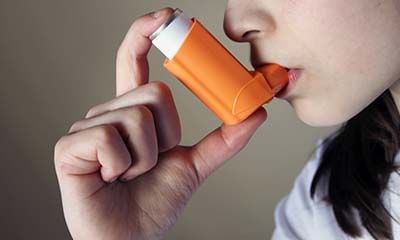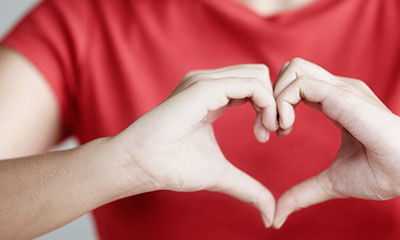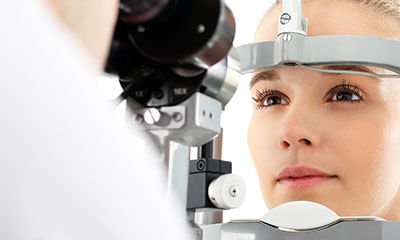Hole In Lung Treatment
My niece has a hole in heart of 3.5 cm as diagnosed while 2d echo and tee test. Can it be diagnosed with the medicines. ...
Ask Free Question
I am sorry to hear about your concern but will be happy to assist you. If one of these openings does not close, a hole is left, and it is called an atrial septal defect. The hole increases the amount of blood that flows through the lungs and over time, it may cause damage to the blood vessels in the lungs. Let's connect over a call so that we can discuss your concern in details and make a suitable treatment plan for you.
My finger tip of index finger in big in size then rest other fingers and my nail in curved downward what is this? ...
Ask Free Question
Clubbing of the fingers, also described as hypertrophic osteoarthropathy (hoa), is an enlargement of the ends of the fingers accompanied by a downward sloping of the nails. You can have primary hoa, which is simply a clubbed appearance of your fingers that is not associated with any health problems. Or you can develop secondary clubbing, which is caused by health problems such as lung cancer and heart disease. 1 clubbing of fingers desherinka / wikimedia commons / cc by-sa 4.0 the clubbing itself is not harmful, but since it can be a sign of disease, it is important that your medical team identifies the cause and that you are treated for your underlying condition. Also known as clubbing is also referred to as clubbed fingers, digital clubbing, watch-glass nails, drumstick fingers, hippocratic fingers, hippocratic nails. Clubbing symptoms verywell/jessica olah symptoms clubbing can involve your fingers and/or toes. It is typically bilateral (affecting both hands and/or feet) and it should be equal in terms of its extent on both sides. If you or your child has primary hoa, then your fingers or toes may naturally appear large, bulging, and rounded. This will be noticeable during childhood or during the teenage years, and it will not change much over time. With primary hoa, other family members are also likely to have finger and/or toe clubbing. 1 secondary clubbing happens gradually, and it causes a change in the appearance of your fingers and/or toes. With secondary clubbing, which is caused by disease, you would also have other features that are not seen in primary clubbing. Features of secondary clubbing include: softening of the nails nail beds that soften and feel spongy nails that seem to "float" instead of being firmly attached to your fingers disappearing of the angle between your nails and cuticle enlargement or bulging of the distal portion of your finger (where your finger meets your nail) warm, red nail beds nails that curve downward and look like the bottom of the round part of a spoon eventually, the nail and skin around the nail may become shiny, and the nail develops ridging. 1 causes primary clubbing is hereditary, and it is passed down via genes. Hereditary clubbing is simply a physical feature, like the color of your eyes or your height. Several genes have been associated with primary clubbing, including the hpgd gene and the slco2a1 gene. 2 secondary clubbing occurs as one of the effects of chronic lung and heart disease. Lung cancer is the most common cause of clubbing. This sign is also associated with a number of other chronic illnesses, including conditions that involve the thyroid gland or the digestive system. 1 there are a number of health risk factors associated with secondary clubbing, including: 3 lung cancer interstitial pulmonary fibrosis lung abscess pulmonary tuberculosis pulmonary lymphoma congestive heart failure infective endocarditis cyanotic congenital heart disease bronchiectasis cystic fibrosis other types of cancer, including liver, gastrointestinal or hodgkin lymphoma inflammatory bowel disease liver cirrhosis gastrointestinal neoplasms celiac disease dysentery graves' disease an overactive thyroid gland how disease affects nail beds the medical conditions that can cause clubbing are generally associated with decreased oxygen levels. Experts suggest that clubbing occurs as your body undergoes changes in response to low oxygen. Several processes affect the nail beds in secondary clubbing. The nail enlargement occurs due to the growth of excess soft tissue beneath the nail beds. The enlargement is associated with inflammation and a proliferation of small blood vessels in the nail beds. 1 a protein called vascular endothelial growth factor stimulates the growth of blood vessels, and this protein is considered a major factor in the physical changes that occur in clubbing. 4 common complications of copd diagnosis clubbing can be subtle, so it may be difficult for you and your medical team to verify this change in your digits. There are a few objective criteria that are used to assess clubbing, and they can help in determining whether you have developed this physical change: lovibond's profile sign: normally, there is a sharp angle between the nail bed and the cuticle. When you have clubbing, the natural angle is lost as the nail angles down instead of up. Distal/interphalangeal depth ratio: the phalanges of your finger are the sections between each bending joint. Your distal phalange, the one that includes your nail, is normally shorter depth-wise than the neighboring phalange. Clubbing is indicated when the opposite is true. Schamroth's sign: the sharp angle between your nail bed and cuticle forms a tiny diamond-shaped hole when you place your hands together with the top of your nails facing each other. When this gap disappears, it is described as schamroth's sign. 4 assessing underlying conditions often, clubbing develops due to a chronic medical condition that was diagnosed years before the clubbing developed. When you start to have clubbing of your digits, your medical team will evaluate you to identify any underlying disease that could be causing it. Even if you have an established lung or heart condition, your medical team will assess your condition to identify any progression that could require an adjustment of your treatment. Tests that you may need in the evaluation of clubbing include: 1 a physical examination to assess for signs such as weight loss, difficulty breathing, skin changes, alterations in your pulse, or altered blood pressure a pulse oximeter to measure your blood oxygen level pulmonary function tests (pfts) arterial blood gas test chest imaging tests, such as chest x-ray or chest computerized tomography (ct) blood tests, including complete blood count (cbc), electrolyte levels, liver function tests (lfts), and/or thyroid tests an electrocardiogram (ekg) or echocardiogram to assess your heart function abdominal imaging tests such as ct or ultrasound a biopsy if there is a concerning lesion noted on an imaging test how lung cancer is diagnosed treatment usually, the abnormal shape and size of the digits do not cause health problems, but any underlying disease that causes clubbing needs to be medically and/or surgically managed, as appropriate. Treatments may prevent your clubbing from worsening and, in rare cases, can reverse some or all of the physical features of clubbing. 1 there are a variety of approaches used to treat the underlying cause of clubbing. Your treatment will depend on your situation. You may need management of respiratory disease, treatment of heart disease, or interventional therapy for cancer. Treatments may include: anti-inflammatory treatment for inflammatory conditions, including some pulmonary and gastrointestinal diseases hormone replacement pacemaker implantation to improve heart function a word from verywell if you notice that your fingers are clubbing, be sure to discuss this with your healthcare provider. Clubbing can be diagnosed in your healthcare provider's office. Although clubbing itself is harmless and doesn't require treatment, it is often as.
I am 22 years old female. When I was 5, I had asthma, then again when I was 11, I got asthma and admitted to hospital fo ...
Ask Free Question
I am sorry to hear about your concern but will be happy to assist you. Your bronchial tubes deliver air from your trachea (windpipe) into your lungs. When these tubes become inflamed, mucus can build up. This condition is called bronchitis, and it causes symptoms that can include coughing, shortness of breath, and low fever. Let's connect over a call so that we can discuss your concern in details and make a suitable treatment plan for you.
Hi myself monika, my mother is suffering from heart problem there is something detected hole in heart since her childhoo ...
Ask Free Question
I am sorry to hear about your concern but will be happy to assist you. Blood in the sputum is a common event in many mild respiratory conditions, including upper respiratory infections, bronchitis, and asthma. It can be alarming to cough up a significant amount of blood in sputum or to see blood in mucus frequently. In severe cases, this can result from a lung or stomach condition. Let's connect over a call so that we can discuss your concern in details and make a suitable treatment plan for you.
What is vsd? What should be weight of my 12 year old son. His height is 5.2 feet. He has vsd. What precaution are requir ...
Ask Free Question
Hi. A ventricular septal defect (VSD), a hole in the heart, is a common heart defect that's present at birth (congenital). The hole (defect) occurs in the wall (septum) that separates the heart's lower chambers (ventricles) and allows blood to pass from the left to the right side of the heart. The oxygen-rich blood then gets pumped back to the lungs instead of out to the body, causing the heart to work harder. A small ventricular septal defect may cause no problems, and many small VSDs close on their own. Medium or larger VSDs may need surgical repair early in life to prevent complications. Poor eating, failure to thrive, Fast breathing or breathlessness, Easy tiring are a few symptoms. Ideal weight for your 12 year old son should be around 38-40 kgs.
Hi, My niece (sister's daughter) who is 11 years old had a minute hole heart by birth, she had treatment till 6 months b ...
Ask Free Question
Having a pain in your chest can be scary. It does not always mean that you are having a heart attack. There can be many other causes, including Other heart problems, such as angina Panic attacks Digestive problems, such as heartburn or esophagus disorders Sore muscles Lung diseases, such as pneumonia, pleurisy, or pulmonary embolism Costochondritis - an inflammation of joints in your chest Some of these problems can be serious. Get immediate medical care if you have chest pain that does not go away, crushing pain or pressure in the chest, or chest pain along with nausea, sweating, dizziness or shortness of breath. Treatment depends on the cause of the pain. To rule out cardiac issues. Get a ECG and 2D echocardiography done. If they are normal then get a TMT done.
Sir I am suffer from glaucoma in a few days what I do sir please suggest me gud idea what I do sir. ...
Ask Free Question
Can't be cured, but treatment may help requires a medical diagnosis lab tests or imaging often required medium-term: resolves within months with all types of glaucoma, the nerve connecting the eye to the brain is damaged, usually due to high eye pressure. The most common type of glaucoma (open-angle glaucoma) often has no symptoms other than slow vision loss. Angle-closure glaucoma, although rare, is a medical emergency and its symptoms include eye pain with nausea and sudden visual disturbance. Treatment includes eye drops, medications and surgery. Glaucoma treatment may include prescription eye drops, laser surgery, or microsurgery. Eye drops for glaucoma. These either reduce the formation of fluid in the front of the eye or increase its outflow. Side effects of glaucoma drops may include allergy, redness of the eyes, brief stinging, blurred vision, and irritated eyes. Some glaucoma drugs may affect the heart and lungs. Be sure to tell your doctor about any other medications you are currently taking or are allergic to. Laser surgery for glaucoma. Laser surgery for glaucoma slightly increases the outflow of the fluid from the eye in open-angle glaucoma or eliminates fluid blockage in angle-closure glaucoma. Types of laser surgery for glaucoma include trabeculoplasty, in which a laser is used to pull open the trabecular meshwork drainage area; iridotomy, in which a tiny hole is made in the iris, allowing the fluid to flow more freely; and cyclophotocoagulation, in which a laser beam treats areas of the middle layer of the eye, reducing the production of fluid. Microsurgery for glaucoma. In an operation called a trabeculectomy, a new channel is created to drain the fluid, thereby reducing intraocular pressure that causes glaucoma. Sometimes this form of glaucoma surgery fails and must be redone. For some patients, a glaucoma implant is the best option. Other complications of microsurgery for glaucoma include some temporary or permanent loss of vision, as well as bleeding or infection. Open-angle glaucoma is most commonly treated with various combinations of eye drops, laser trabeculoplasty, and microsurgery. Traditionally in the u. S. Medications are used first, but there is increasing evidence that some people with glaucoma may respond better with early laser surgery or microsurgery. Infant or congenital glaucoma -- meaning you are born with it -- is primarily treated with surgery, because the cause of the problem is a very distorted drainage system. Talk to your eye doctor to find out which glaucoma treatment is right for you.
Hi doctor, I have hole in my heart from by birth in VSD of 4mm. Initially doctor told this may close as i grow up we wil ...
Ask Free Question
You will require surgery if you develop heart failure which can be predicted by echocardiographic parameters. One more thing, before you undergo some particular procedure, you may have to take antibiotic prophylaxis. Make sure your surgeon knows this.
My daughter aged 8 month is born with congenital heart defect. Her recent 2d echo report state that (1) acyanotic congen ...
Ask Free Question
You can wait till 2 years of age. But keep the baby in regular follow up with serial echo 6 monthly to see any bad effect on the lung due to increased flow from the defect. Chances of closure in 8-9 mm asd is less. In case asd less than 8 mm 80% chance of closure is there.





